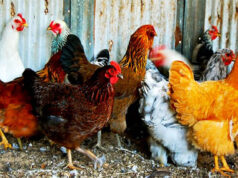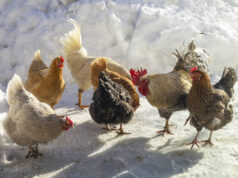The emergence of Oregon disease in chickens has brought substantial challenges to poultry farmers. This disease can have a significant impact on the health of your flock and, consequently, your livelihood. This article aims to provide a comprehensive understanding of the Oregon disease affecting chickens so that you can safeguard your poultry effectively.

What is Oregon Disease in Chickens?
Oregon disease chicken is a relatively new and concerning health issue in the poultry industry. While it is still under research, it appears to be a variant of a common avian disease but with unique characteristics native to the Oregon region.
Symptoms of Oregon Disease
Understanding the symptoms is crucial for early identification and treatment. Some of the common symptoms of Oregon disease chicken include:
- Lethargy and decreased activity
- Loss of appetite
- Respiratory issues such as coughing and wheezing
- Feather loss and skin rashes
- Sudden death in severe cases
How Does Oregon Disease Spread?
Oregon disease can spread rapidly through a flock due to close living conditions and shared resources. The disease can be transmitted via:
- Direct bird-to-bird contact
- Contaminated feed and water
- Human interaction and farming equipment

Preventative Measures
Taking preventative measures is the best way to protect your flock from Oregon disease. Here are some steps you can take:
Maintain Cleanliness
Ensure that the coop and surrounding areas are kept clean. Regularly disinfect all equipment and living spaces.
Feed Quality
Provide high-quality feed to your chickens. Poor nutrition can weaken their immune system, making them more susceptible to diseases. For more information on chicken feed, visit Purina Mills.
Quarantine New Arrivals
Always quarantine new birds before introducing them to your existing flock. This helps in identifying any potential health issues early on.

Treatment Options
If your flock is already affected by Oregon disease chicken, immediate treatment is essential to prevent further casualties.
Antibiotics
Consult a veterinarian for the appropriate antibiotics. Early treatment can significantly improve the chances of recovery.
Isolation
Isolate the infected birds to minimize the spread of the disease. Provide them with a warm and safe environment for recovery.
Supportive Care
Ensure the infected birds have access to clean water and nutritious feed. Supportive care can make a big difference in their recovery process.

Impact on Poultry Farming
The outbreak of Oregon disease in chickens has been a significant concern for poultry farmers. It has led to decreased productivity, increased costs for medical treatment, and in severe cases, devastating losses of entire flocks.
Economic Impact
The economic impact is substantial, affecting both small and large-scale poultry operations. Preventative measures are critical to avoid these financial repercussions.
Regulatory Concerns
There are regulatory concerns associated with widespread disease outbreaks. Compliance with local regulations and guidelines is essential for farmers to avoid penalties and ensure the health and safety of their flocks.
Conclusion
Oregon disease in chickens is a serious concern that requires immediate attention from poultry farmers. By understanding the symptoms, being proactive with preventative measures, and knowing the treatment options, you can effectively manage and protect your flock from this dangerous disease.
Frequently Asked Questions
What Are The Symptoms Of Oregon Disease In Chickens?
Common symptoms include lethargy, loss of appetite, respiratory issues, feather loss, skin rashes, and sudden death.
How Can I Prevent Oregon Disease In My Flock?
Maintain cleanliness, provide high-quality feed, and quarantine new birds before introducing them to your existing flock.
What Should I Do If My Chickens Are Infected?
Consult a veterinarian for appropriate antibiotics, isolate the infected birds, and provide supportive care with clean water and nutritious feed.
As an Amazon Associate, I earn from qualifying purchases.










